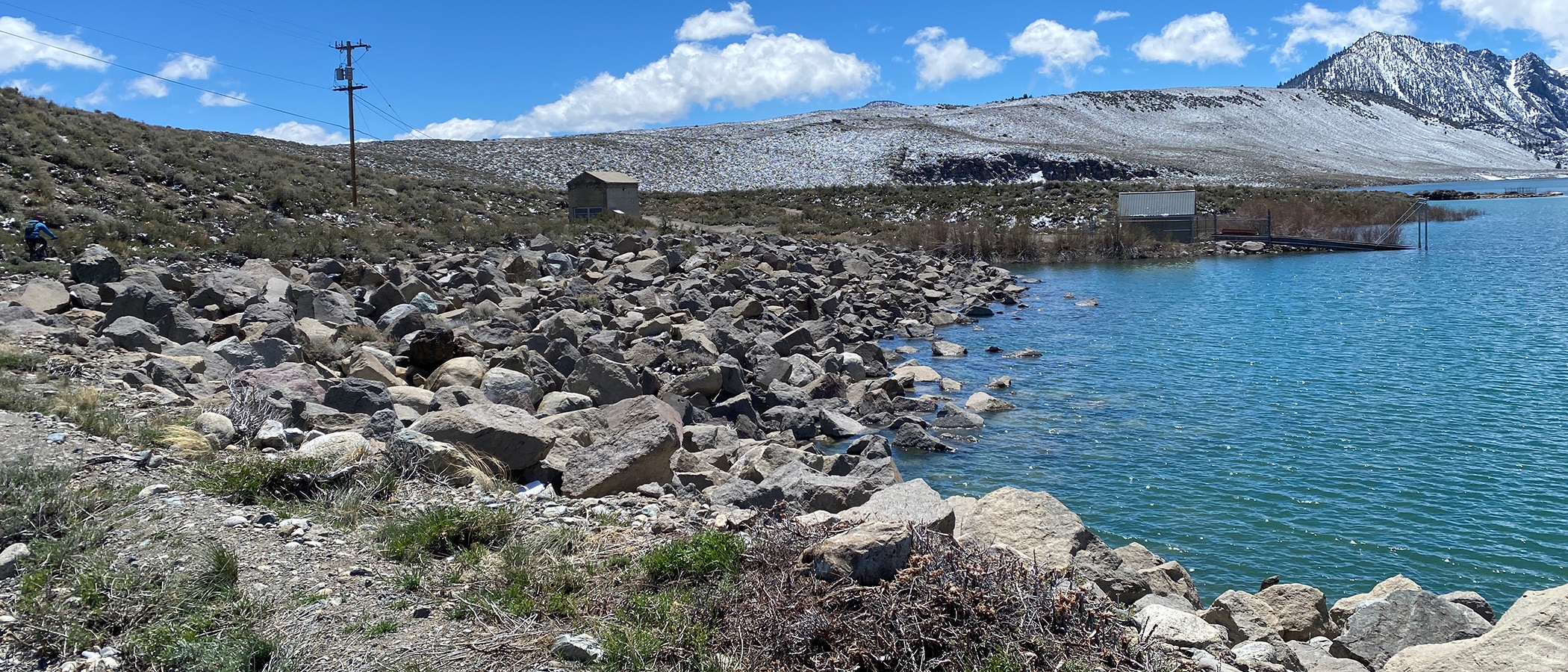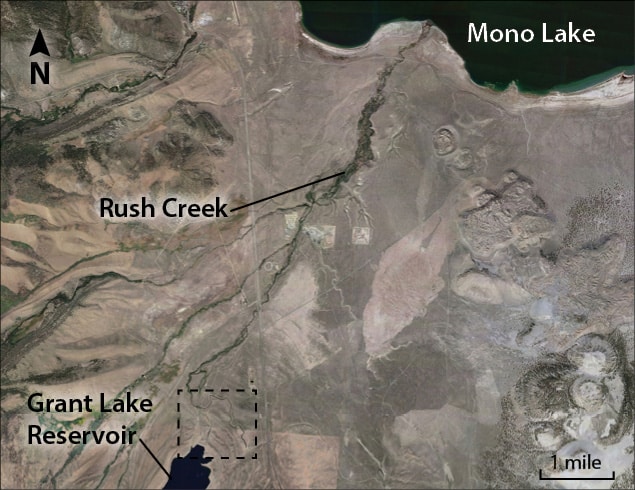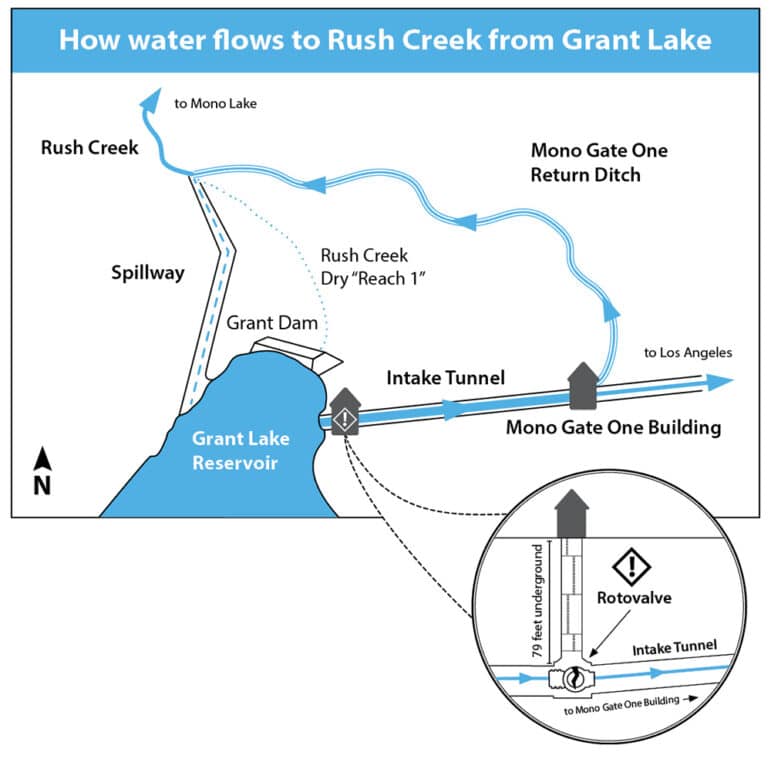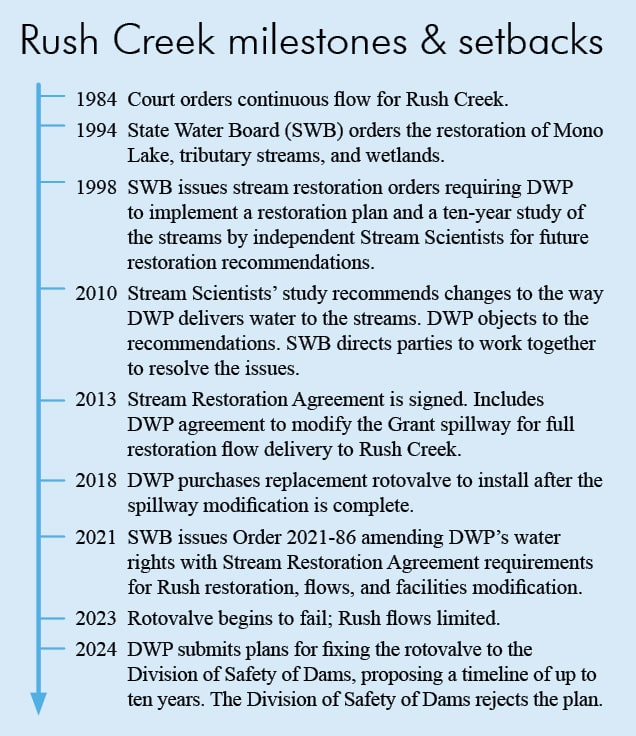
Aging Los Angeles Department of Water & Power (DWP) infrastructure is further delaying the construction of the long-awaited modification to Grant Lake Reservoir necessary to reliably deliver the high flows needed to restore Rush Creek.
Moving water around Grant Dam into Rush Creek has long involved an engineered work-around with limited ability to mimic natural runoff in wetter-than-average years.


Now, in addition to that unresolved situation, a rotovalve that controls water flow into the aqueduct intake tunnel has partially failed, and the California Department of Water Resources Division of Safety of Dams has told DWP that the rotovalve must be replaced before the long-planned outlet construction can begin.
The 88-year-old rotovalve suffered cavitation damage—pitting the metal components inside the valve. Running the system at lower capacity is the only way to prevent complete failure.
The rotovalve’s operation is currently limited to 175 cubic feet per second (cfs), significantly less than the 380 cfs it could originally carry. This limitation means that DWP cannot meet the required 2024 spring runoff streamflows. In 2021, after years of seeing the severe limitations of the Grant Reservoir system, the State Water Board amended DWP’s water licenses, ordering DWP to construct an outlet that reliably delivers seasonally larger and more natural Stream Ecosystem Flows to Rush Creek to achieve stream restoration goals.
To be able to deliver the required flows, DWP has planned to widen and deepen the existing spillway and install two 14-foot-tall Langemann gates that will allow for controlled releases of the required amounts from the reservoir. DWP completed environmental review in 2020, and construction was planned to begin in 2024 and finish in 2025.
The Mono Lake Committee, California Department of Fish & Wildlife, and California Trout are very concerned about this latest development. Although the failing rotovalve in its current state does not limit the total quantity of water delivered to Mono Lake or Los Angeles, it imposes even more severe limits on DWP’s ability to deliver the long-overdue mandated streamflows needed to restore Rush Creek.

This post was also published as an article in the Summer 2024 Mono Lake Newsletter. Top photo by Elin Ljung.
